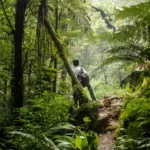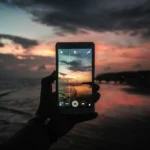Table of Contents
ToggleIntroduction
Nestled on the eastern coast of Sabah, Sandakan is a natural wonderland filled with wild riverbanks, misty rainforests, and charismatic wildlife. But here’s the catch: when you visit makes all the difference.
Whether you’re eager to spot a Bornean Orangutan swinging through the canopy, cruise the Kinabatangan River at dawn, or capture golden hour magic at the Sandakan Harbour, your timing can elevate a good trip into an unforgettable one.
The difference between a rain-soaked camera lens and that perfect sunrise over the treetops? It’s all about planning around Sandakan’s unique climate.
This guide is your quick reference to discovering the perfect seasons for wildlife encounters and sightseeing in Sandakan. From weather trends and animal activity to eco-tour schedules, we’ll help you plan your trip in harmony with nature’s rhythm.
Sandakan Weather Overview by Season
Sandakan enjoys a tropical rainforest climate, meaning it’s warm and humid year-round. However, two distinct seasons—dry and rainy—can dramatically affect your plans. These matters need to be taken into great consideration to ensure the best time to visit Sandakan.
Dry Season (March to October)
This is widely considered the best time to visit Sandakan. The months between March and October offer lower rainfall, clearer skies, and better access to jungle trails and river tours.
- Wildlife sightings are more frequent—animals gather at riverbanks or feeding platforms.
- Orangutans and sun bears at Sepilok are more active and visible.
- Photography lovers will appreciate softer light and less humidity for crystal-clear shots.
- Trekkers and birdwatchers benefit from drier forest floors and open canopies.
Rainy Season (November to February)
This season doesn’t mean your trip is ruined, but it does require a bit more planning. Expect afternoon downpours, muddy paths, and occasional delays or cancellations of river cruises.
- Some wildlife hides deeper in the forest, making them harder to spot.
- Water levels may rise too high for safe river safaris.
- However, rain brings out lush greenery, exotic fungi, and is great for low-season travelers seeking solitude.
In short, travel is possible all year-round, but understanding the nuances of the weather ensures your activities align with the natural rhythm of the land.
Best Time to See Orangutans in Sepilok
One of Sandakan’s most iconic experiences is visiting the Sepilok Orangutan Rehabilitation Centre, where you can witness rescued orangutans as they transition back into the wild.
The centre is open daily and sees visitors all year, but timing your visit during the dry season from April to October can make the encounter even more memorable.
Why? Because:
- Feeding platforms are less muddy, making for a more comfortable viewing experience.
- Orangutans are more likely to appear when it’s dry, especially during morning feedings at 10 AM and 3 PM.
- The humidity is lower, which is ideal for walking the forest trails and spending more time in the observation areas
And let’s not forget the photo factor— better lighting conditions mean you’ll snap that perfect shot of a young orangutan swinging freely in its natural habitat.
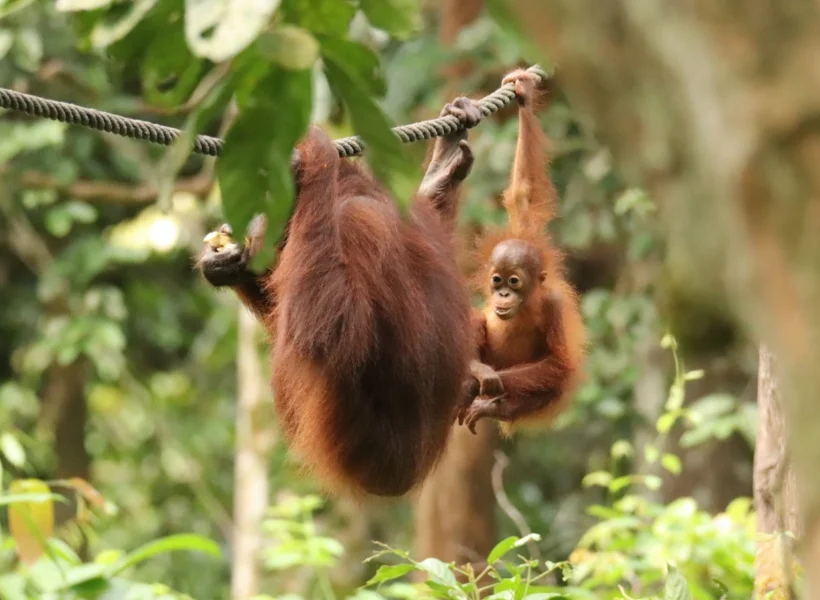
Best Time for Wildlife Watching in the Kinabatangan River
The Kinabatangan River is a haven for wildlife watchers. Stretching over 560 KM, it’s home to Pygmy Elephants, Proboscis Monkeys, crocodiles, and over 200 species of birds. But even in this rich environment, timing your visit is key.
Best Time: May to August
- River levels are ideal—not too high, not too low.
- Animals are more concentrated near the riverbanks, especially during early morning and sunset cruises.
- You’re more likely to see large mammals like elephants during this time as they come to drink water and forage.
Avoid the peak of the rainy season (November–January), when riverbanks flood, and boats may have to reroute or cancel altogether.
For wildlife photographers and nature lovers, there’s no better show than a misty sunrise boat ride, spotting Hornbills above and crocodiles lurking below.

Best Time for Sightseeing & Photography in Sandakan: When Is It Most Scenic?
Sandakan is a photographer’s playground—a harmonious blend of untouched nature, colonial charm, and striking cultural contrasts. From golden coastlines to emerald rainforests, every turn offers a frame-worthy moment. But if you’re aiming to truly capture the essence of Sandakan on camera (or in your memories), timing is everything.
The town’s scenery transforms depending on the season. During the dry months (March to October), Sandakan reveals its most photogenic side. Skies are generally clearer, colors pop with contrast, and the light is crisp—perfect for wildlife photography, nature shots, and urban exploration.
Why the Dry Season Offers the Best Light
Photographers will love the early morning and late afternoon light in Sandakan during the dry season. Known as the “golden hours,” these times cast a warm, diffused glow that’s perfect for:
- Capturing the dramatic silhouettes of rainforest canopies at dawn.
- Shooting long-exposure river scenes as mist rises from the Kinabatangan.
- Snapping the sunset over Sandakan Harbour, when boats and colonial rooftops reflect the orange hues of the sea.
Plus, reduced humidity in mid-year months helps prevent lens fog and haze, ensuring your images come out sharper and more defined.
Where to Find the Most Scenic Views for Wildlife & City Vibe
Here are just a few of the most camera-worthy spots to add to your Sandakan travel plan:
- Sandakan Harbour Square: A bustling waterfront promenade that glows at sunset. Great for both wide-angle shots and candid travel photos.

- Puu Jih Shih Buddhist Temple: Perched on a hill, this colorful temple offers panoramic views of the coastline below—especially photogenic when clouds break over the sea.
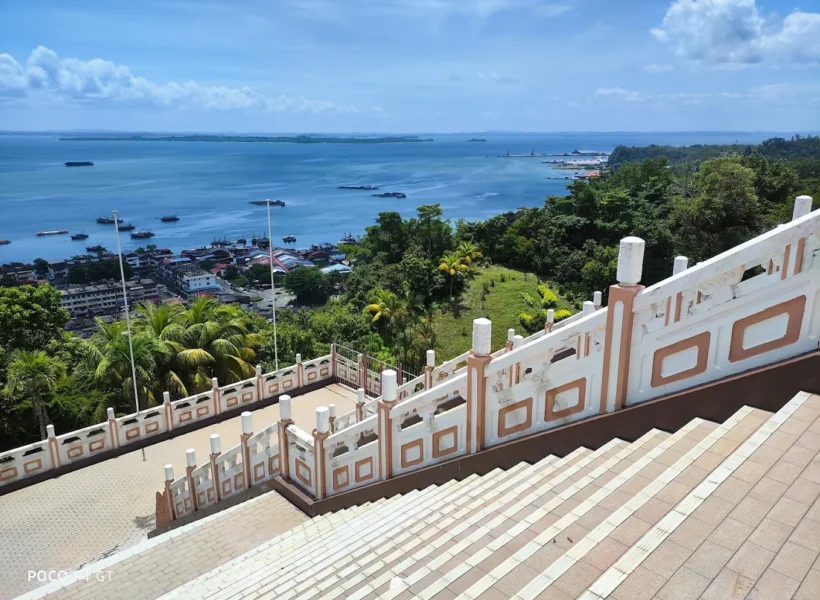
- Agnes Keith’s House and English Tea House: Step back in time and photograph Sandakan’s colonial legacy surrounded by manicured gardens.
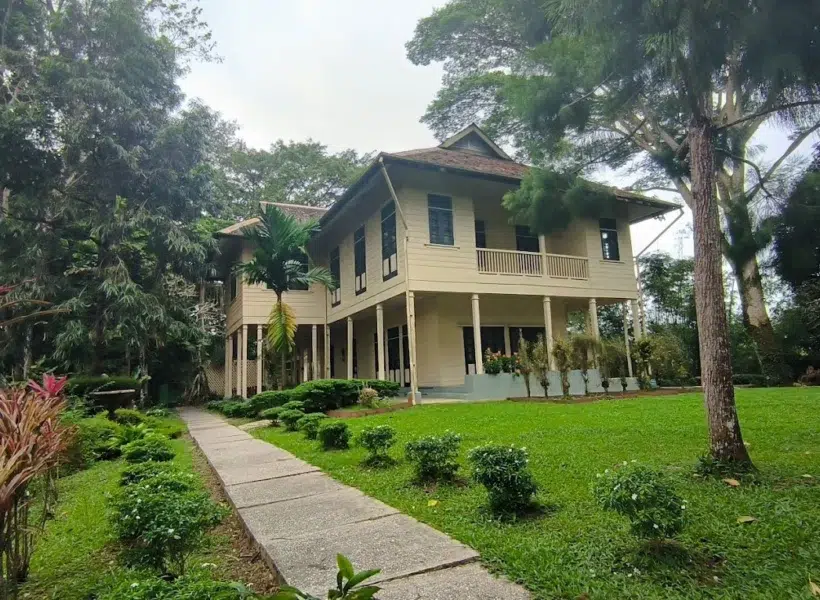
- Rainforest Discovery Centre (RDC): Climb the canopy walk for a bird’s-eye view of the jungle. Early morning is best for misty rainforest shots and birdwatching.
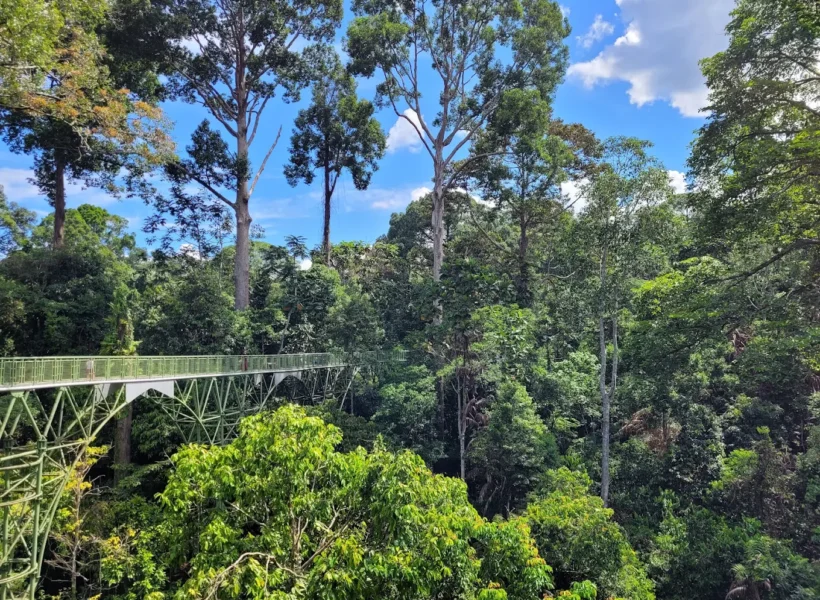
- St. Michael’s and All Angels Church: A Gothic stone church framed by massive trees—perfect for moody, historical photography.

Rainy Season Photography in Sandakan: Worth It?
Surprisingly, the rainy season (November to February) can still offer incredible photography opportunities, especially for those who enjoy moodier tones and lush, saturated foliage.
After a light rain, everything looks greener, fresher, and more alive. Water droplets on leaves, low-hanging mist over the treetops, and reflective puddles create a dreamy, ethereal vibe perfect for macro photography, landscape shots, and artistic portraits.
Just come prepared with:
- A weather-sealed camera or rain cover
- A dry cloth or lens cleaner to combat condensation
- Extra memory cards and batteries (humidity drains gear faster!)
Tips for the Perfect Photo Moments
- Arrive early: Light is best from 6:30 AM to 8:30 AM and 5:00 PM to 6:30 PM.
- Use a polarizing filter: This reduces glare and enhances the blue of the skies—essential during dry season.
- Be patient with wildlife: Use zoom lenses (200mm or higher) and wait quietly. Early morning and just before sunset are your best windows.
- Always respect nature: Stay on marked trails, don’t use flash on animals, and avoid disturbing habitats for a photo.
Highlights at a Glance
- Best season for photos: June to September (clear skies + ideal lighting)
- Top spots: Harbour Square, Puu Jih Shih Temple, RDC, Agnes Keith’s House
- Rainy season vibe: Lush, mystical, perfect for moody and creative shots
- Golden hour: Around sunrise and sunset—don’t miss it!
To discover more photography spots in Sandakan and useful photo tips, head over to: Top 10 Best Instagrammable Spots in Sandakan
Top Months to Visit Sandakan
If you’re planning a trip to Sandakan and wondering when exactly to go, the answer depends on what kind of experience you’re after— wildlife encounters, comfortable weather, or sightseeing opportunities. While the town enjoys tropical weather year-round, some months stand out for very good reasons.
January and February sit deep in the rainy season. Expect frequent downpours and muddy trails. While these months aren’t the best for wildlife, they are quieter time for budget travelers who don’t mind the wet.
March and April mark the transition out of the wet season. Rain begins to ease, and wildlife becomes more active again. These are great months if you’re looking to explore before the crowds arrive.
May and June are golden months for both wildlife and weather. The dry season is in full swing, and nature is buzzing with activity. Jungle trails are open, and river conditions are excellent for cruises.
July and August are peak seasons. These months offer the most favorable conditions for wildlife viewing, sightseeing, and photography. Expect slightly higher tourist traffic, so book tours and accommodations early.
September and October remain dry, though brief showers can return. They are quieter than July or August, making them ideal for those seeking optimal travel conditions without the peak crowd.
November and December signal the return of the rainy season. Sightings drop, and some eco-tours may slow down or suspend. However, landscapes are lush and rejuvenated, offering serene beauty for off-season travelers.
✅ Quick Summary: Best Months to Visit Sandakan
- May to August: Best for wildlife, river cruises, and eco-tours.
- March to April: Great shoulder months with fewer tourists.
- September and October: Mild weather and moderate crowds.
- Avoid November to February: Rainy season with limited activities.
✅ Dry Season Packing List (March to October)
The dry season is the most popular time to visit Sandakan, and while rainfall is minimal, the heat and humidity remain high. You’ll likely be outdoors most of the day, whether you’re walking canopy trails or cruising the Kinabatangan River. Here’s what you’ll need:
- Lightweight, breathable clothing: Choose moisture-wicking fabrics like quick-dry t-shirts, long sleeves, and cargo pants to stay cool while protecting yourself from sunburn and insects.
- Comfortable walking shoes or hiking sandals: Many jungle paths can still be uneven or muddy even in the dry season. A sturdy, breathable pair of shoes will keep your feet blister-free.
- Wide-brim hat and UV sunglasses: Protect your face and eyes from direct sunlight, especially during midday river cruises or open-area sightseeing.
- High SPF sunscreen and insect repellent: You’ll be exposed to both sun and mosquitoes, so don’t skip these essentials. DEET-based repellents are best for jungle protection.
- Camera with zoom lens and waterproof bag: Dry season is prime time for photography. Bring a zoom lens for wildlife and a dry bag to protect your electronics from unexpected rain or river splashes.
- Binoculars: Ideal for birdwatching and spotting distant orangutans or monkeys in the treetops.
- Refillable water bottle: Stay hydrated. Reusable bottles with built-in filters are recommended for eco-conscious travelers.
✅ Rainy Season Packing List (November to February)
Traveling during the wet season means you’ll face unpredictable showers, slippery trails, and high humidity—but with the right gear, your trip can still be comfortable and memorable.
- Waterproof jacket or rain poncho: Don’t rely on disposable plastic ponchos. A reusable, breathable rain jacket will keep you dry without overheating.
- Quick-dry clothes: Avoid cotton—it holds moisture and takes forever to dry. Instead, opt for synthetic materials that dry fast after a rain shower or sweaty hike.
- Waterproof backpack cover or dry bag: Essential for protecting your belongings during downpours or boat rides.
- Water-resistant shoes or rubber sandals: Closed waterproof shoes or hiking sandals with grip are ideal for muddy trails. Avoid flip-flops for jungle walks.
- Antibacterial wipes and hand sanitizer: With high humidity and wet conditions, it’s easy to get dirty. These are must-haves for staying clean and hygienic on the go.
- Extra socks and undergarments: Nothing is worse than damp socks and underwear. Bring extras to change into after each outing.
- Compact umbrella: Handy for sudden rain while walking through town or waiting for tours.
- Motion sickness pills (optional): Roads may be slippery, and boat rides choppier in wetter months—especially useful for sensitive travelers.
No matter when you travel, remember that Sandakan is an eco-tourism destination, so choose sustainable travel gear whenever possible. Avoid single-use plastics, pack reusable cutlery or straws if needed, and leave no trace in Sabah’s beautiful rainforests.
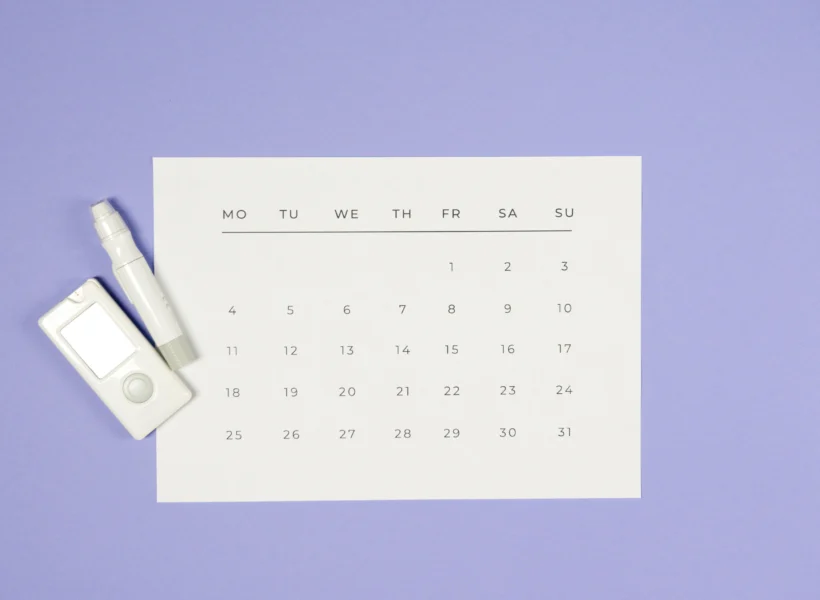
When to Travel to Sabah for Eco-Tours
Sabah is a bucket-list destination for eco-tourism, and Sandakan is one of its crown jewels. But not all eco-activities are available year-round, and some experiences are dramatically improved during certain months.
Best Time for Eco-Tours: April to September
- The Rainforest Discovery Centre is in full bloom, offering rich birdwatching and botanical experiences.
- Night walks in Sepilok and forest reserves are safer and drier.
- River-based eco-lodges along Kinabatangan offer all-inclusive packages that coincide with wildlife movement patterns.
Traveling during these months ensures that canopy walks, jungle treks, and community-led eco-tours operate at full capacity. Not to mention, your support goes further during the sustainable tourism season, when local guides and nature reserves are at their busiest and most engaging.
Final Thoughts
Sandakan is a place that rewards patience and planning. While it’s beautiful year-round, those who time their visit to match the natural behavior of the wildlife, the seasonal beauty of the forest, and the peak months for eco-tours, will walk away with something far richer than snapshots—they’ll take home living memories.
From the orangutans at Sepilok to the mystical mornings on the Kinabatangan River, every corner of Sandakan offers something extraordinary — but only if you know when to go.
Let this guide assist you on the best time to visit Sandakan, and for a complete overview of attractions, tips, and local foods, explore our Ultimate Sandakan Travel Guide to make the most of your trip.
FAQs: The Best Time to Visit Sandakan
Is it safe to travel to Sandakan during the rainy season?
Yes, it’s safe but expect travel delays, muddy trails, and fewer wildlife sightings. Pack smart!
What is the hottest month in Sandakan?
May and June are usually the hottest and driest, ideal for sightseeing.
Are tours available year-round?
Yes, but availability and accessibility may vary based on the weather.
When is the best time for birdwatching in Sandakan?
April to August is prime time at Rainforest Discovery Centre.
Can I visit both Sepilok and Kinabatangan in one trip?
Absolutely! Many tour packages combine both for a complete wildlife experience.
Let Us Help You Discover the Best of Sandakan’s Nature
Not sure where to begin your journey? Whether you’re planning your first visit or returning for a deeper adventure, our local team is here to help you experience Sandakan’s natural wonders at the right time and in the right place.
From wildlife-rich river cruises and early morning treks to the best spots for sunset rainforest views or birdwatching in Sepilok, we know how to match each moment of the year with the most breathtaking experiences.
With our insider knowledge, you can:
- Choose the perfect month for Orangutan sightings at Sepilok.
- Time your trip around peak wildlife activity along the Kinabatangan River.
- Capture unspoiled rainforest landscapes under the ideal lighting conditions.
- Get tailored recommendations based on your interests—wildlife, photography, relaxation, or adventure.
📩Reach out through our contact page and we’ll help you build a personalized nature experience that goes beyond the guidebooks.


